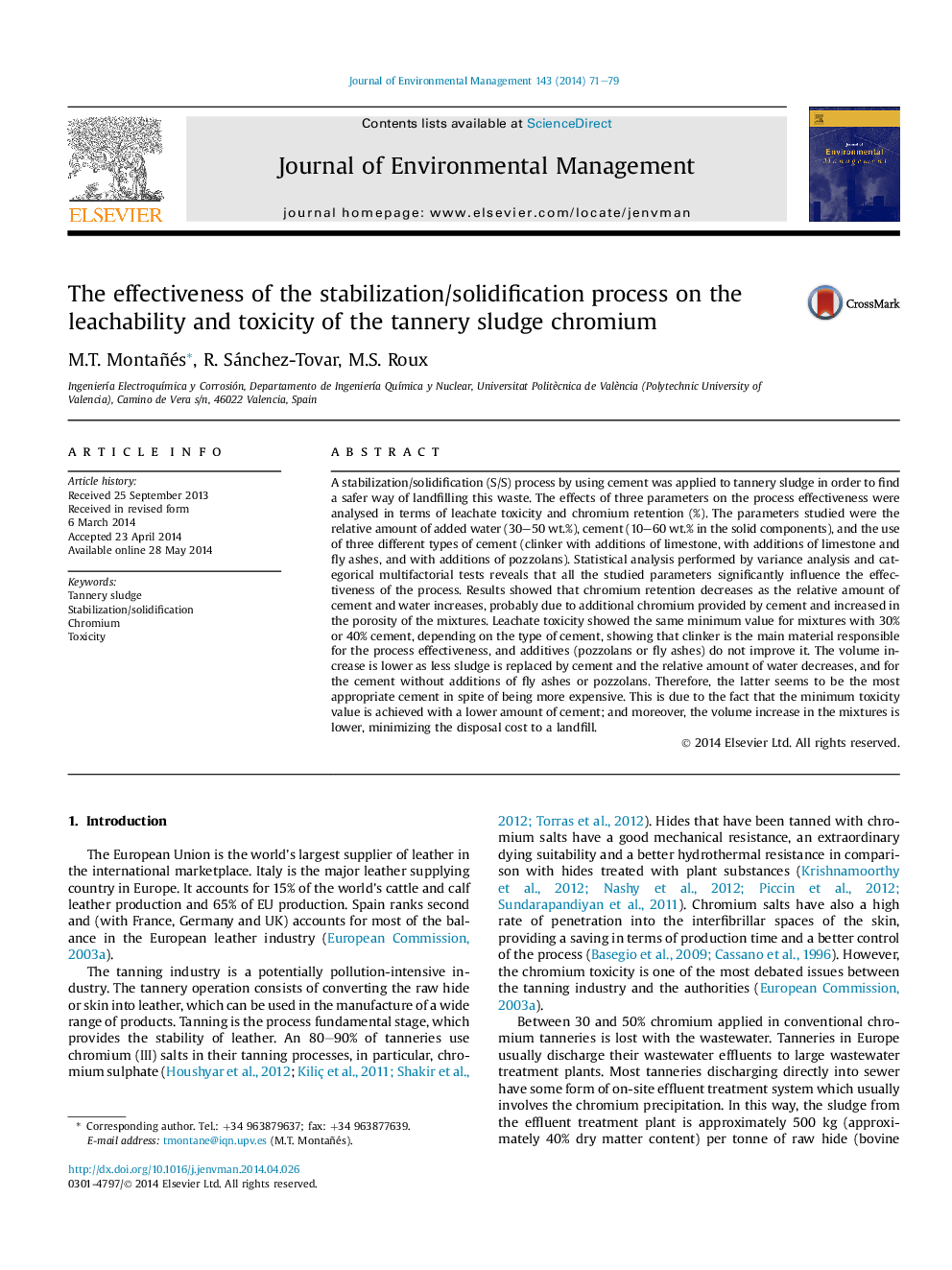| Article ID | Journal | Published Year | Pages | File Type |
|---|---|---|---|---|
| 1055755 | Journal of Environmental Management | 2014 | 9 Pages |
•The inertization process results in increased Cr retention and decreased toxicity.•The process is significantly affected by cement and water content and by the binder.•The Cr retention values decrease as the amount of cement and water increases.•The toxicity values depend on the cement type used.•The additive-free cement is more suitable in terms of toxicity, volume and price.
A stabilization/solidification (S/S) process by using cement was applied to tannery sludge in order to find a safer way of landfilling this waste. The effects of three parameters on the process effectiveness were analysed in terms of leachate toxicity and chromium retention (%). The parameters studied were the relative amount of added water (30–50 wt.%), cement (10–60 wt.% in the solid components), and the use of three different types of cement (clinker with additions of limestone, with additions of limestone and fly ashes, and with additions of pozzolans). Statistical analysis performed by variance analysis and categorical multifactorial tests reveals that all the studied parameters significantly influence the effectiveness of the process. Results showed that chromium retention decreases as the relative amount of cement and water increases, probably due to additional chromium provided by cement and increased in the porosity of the mixtures. Leachate toxicity showed the same minimum value for mixtures with 30% or 40% cement, depending on the type of cement, showing that clinker is the main material responsible for the process effectiveness, and additives (pozzolans or fly ashes) do not improve it. The volume increase is lower as less sludge is replaced by cement and the relative amount of water decreases, and for the cement without additions of fly ashes or pozzolans. Therefore, the latter seems to be the most appropriate cement in spite of being more expensive. This is due to the fact that the minimum toxicity value is achieved with a lower amount of cement; and moreover, the volume increase in the mixtures is lower, minimizing the disposal cost to a landfill.
